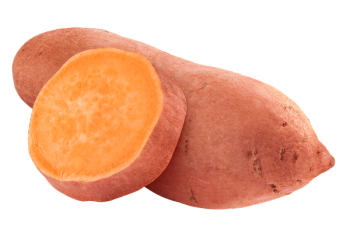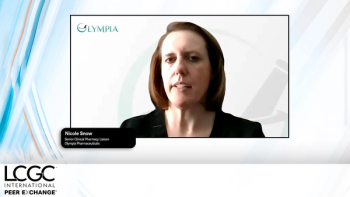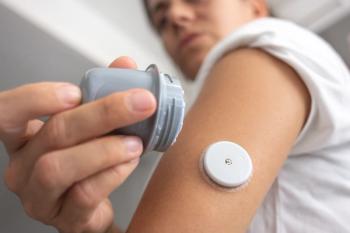
E-Separation Solutions
- E-Separation Solutions-01-20-2011
- Volume 0
- Issue 0
Sample Preparation
Participants in this discussion are Vivek Joshi of EMD Millipore; Joe Dibussilo, Jonathan McNally, and Jeff Zonderman of Thermo Fisher Scientific; and Diane Diehl and Mike Yelle of Waters Corporation.
Sample preparation is an integral part of most successful chromatographic analyses. Participants in this discussion are Vivek Joshi of EMD Millipore; Joe Dibussilo, Jonathan McNally, and Jeff Zonderman of Thermo Fisher Scientific; and Diane Diehl and Mike Yelle of Waters Corporation.
For many years, workers have felt that sample preparation is the bottleneck in the chromatography laboratory, yet very little progress has been made in alleviating the bottleneck. People still say that sample prep is the major bottleneck. Why is this?
Joshi: Even though a lot of progress has been made in the sample prep arena, progress in chromatography has overshadowed advances in sample preparation. For instance, 5 years ago chromatography runs of 5–20 min were considered typical. However, with the advent of ultrahigh-pressure liquid chromatography (UHPLC) and superficially porous chromatography media, 1–3 min chromatography runs are becoming more and more common. These advances haven’t been matched by advances in sample preparation and thus sample preparation is still considered to be a bottleneck.
For example, one of the simplest sample preparation techniques is syringe-tip filtration of a sample prior to chromatography to remove particles. Because syringe filtration is still very manual and serial, it can become the slowest and most tedious step in the whole sample prep work flow. New filtration systems that simultaneously process multiple samples can significantly improve throughput in this area of sample prep.
Zonderman: With the technical advancement of detectors, matrix effects have become a more significant problem. Acetonitrile crashes, solid-phase extraction (SPE), or liquid–liquid extraction are common techniques yet they are considered time consuming, costly, and not selective enough to clean all the matrix interferences that will cause problems with the robustness of an assay or method. Also with the trends of high sample volumes, less experienced users, and so forth, the demand for even more automation preanalytical is growing.
Diehl and Yelle: Let’s think about the workflow in the analytical laboratory — sample preparation, LC, mass spectrometry (MS), and informatics. For years, scientists sought to improve the quality of results in the analytical lab, while also being driven to produce those results more quickly and efficiently. The innovation of UHPLC reduced a major bottleneck by dramatically reducing analysis times as well as improving sensitivity and selectivity. This then drove the innovations in MS technology to increase scan speeds to keep up with peaks in UHPLC, as well as further improvements in sensitivity. This now leaves sample preparation and informatics. We can classify LC and MS as techniques that are more “generic” — that is, can handle a variety of sample types, once they are in liquid form. However, sample preparation in its broadest term covers a vastly wider scope of techniques. For example, the sample preparation of whole blood, vitamin tablets, oysters, or surface water can be dramatically different, requiring everything from grinders, shakers and centrifuges to extraction vessels, sorbents and filters. Unlike for LC and MS, it is therefore more complicated to provide one sample preparation solution that will solve a majority of the bottleneck.
A new concept is arising called "Just Enough" sample prep where simple techniques such as protein precipitation, QuEChERS, and dried blood spotting are gaining more acceptance, even for complex samples. What do you feel is the main driving force behind this concept?
Joshi: Because sample preparation is considered the bottleneck and the slowest step in the process, scientists are looking at alternative sample prep techniques. These techniques may not provide the cleanest sample for analysis, but the samples are just clean enough to be analyzed using chromatography. The main driving forces behind this move are simplicity, ease, and faster sample prep.
Also on the analysis side, the higher sensitivity and separation capability of chromatographic instrumentation and mass spectrometers are allowing researchers to get away with a sample that is not necessarily free of all the interfering matrix components, but is just clean enough for quantitative analysis.
Dibussilo: In many cases, a simple "crash" with acetonitrile followed by centrifugation or filtration is sufficient for sample preparation. In one economical step, crashing biological fluids precipitates a large amount of unwanted proteins while quenching analyte–protein interactions and making the analytes soluble and chemically stable. Crashing also provides a convenient way to introduce internal standards to the samples. However, the supernatants or filtrates of crashed samples contain unwanted salts, sugars and lipids as well as a considerable amount of proteins and peptides that were not precipitated. An additional step such as on-line SPE removes many of these matrix components so that they do not contaminate or interfere with mass spectrometers interfaced to LC systems.
Dried blood spotting is a convenient way to collect, store and transport blood samples and has been used for newborn screening assays for many years. In some cases, direct analysis of dried blood spots (DBS) utilizing desorption electrospray ionization (DESI) mass spectrometry provides reliable results. A more generic way to analyze DBS samples is to solubilize them with a diluent containing internal standards and then injecting the dissolved matrix directly into an LC–MS-MS system. This automated approach was developed in 2005 for the Mayo Clinic's Biochemical Genetics Laboratory to process DBS samples from newborns to measure steroids that are specific for diagnosing congenital adrenal hyperplasia (CAH). We have since been extending this approach to other areas such as drug discovery and toxicology.
McNally: Mass spectrometers are getting more and more sensitive, separations are improving with UHPLC and, as Joe Dibussilo notes, the use of on-line clean up allows the ”just enough” sample prep concept. I think you are also going to see the use of high-resolution mass spectrometers facilitate this further by adding another level of selectivity.
Besides the time and cost savings, another driving force is the improvement in analytical hardware that is available to researchers. Detectors such as mass spectrometers are becoming more sensitive, chromatographic separations are improving with UHPLC, and on-line sample prep is more routine. When simple sample prep techniques or small sample volumes are used, the performance of the analytical hardware needs to make up the difference. In the future high resolution mass spectrometers will facilitate the concept further by adding additional level of selectivity.
Zonderman: The main drivers are time and cost reductions. This is really driven by the requirements of the assays.
Diehl and Yelle: Cost, cost, and cost. No one LIKES to do sample preparation — but somehow, we need to get our sample into a form that can be injected into the instrumentation. Because of the dramatic cost pressures facing analytical labs, we see the development of “fit for purpose” methods. After assessing the technical, regulatory, and business requirements, a sample preparation method that is simple, cost effective and produces the required results is selected. Some of these techniques, coupled with the latest in analytical instrumentation, offer the simplest solutions.
Articles in this issue
almost 15 years ago
Sample Preparation NewsletterNewsletter
Join the global community of analytical scientists who trust LCGC for insights on the latest techniques, trends, and expert solutions in chromatography.





